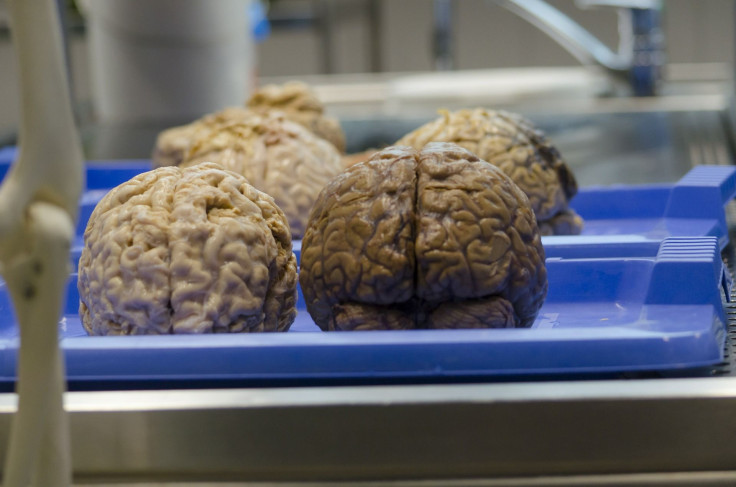Alzheimer’s Disease 2016: 5 Breakthrough Discoveries For Treating Brain Disorder

Every minute in the United States another person is diagnosed with the progressive, life-threatening brain disorder known as Alzheimer’s disease. With more than 5 million adults living with the disease today, neuroscience researchers work to explore new treatment options with the hope of discovering a cure or learning how to prevent the disease altogether.
Alzheimer’s is growing fast; the number of Americans aged 65 and older with the disease is predicted to triple by the year 2050. The disease is an irreversible disorder that slowly destroys memory and thinking skills, and results in brain damage a decade before memory and cognitive problems occur, according to the National Institute on Aging. Its devastating consequences have inspired researchers around the world to search for answers. Read on to learn of five breakthroughs in our understanding of the disease in 2016.
1. Diet and Exercise
Eating well and clocking in a healthy level of physical activity each day may be enough to reduce the brain damaging protein linked to Alzheimer’s disease. The most recent findings were discovered by a team of researchers at UCLA’s Institute for Neuroscience and Human Behavior.
They found that out of 44 adults suffering from memory problems, those who had a healthy body mass index, were physically active, and followed a diet closest to the Mediterranean diet had the lowest levels of plaque buildup in their brain, according to a study which will appear in the September 2016 issue of American Journal of Geriatric Psychiatry.
"The fact that we could detect this influence of lifestyle at a molecular level before the beginning of serious memory problems surprised us," said the study’s lead author Dr. David Merrill, in a statement.
2. Marijuana
Compounds found in marijuana may be able to remove amyloid beta — a toxic protein in the brain linked to Alzheimer’s disease. Knowing that amyloid beta speeds up the rate at which neurons die, (ultimately the reason why Alzheimer’s is a progressive disease), researchers grew neurons in a lab and exposed them to marijuana’s active ingredient tetrahydrocannabinol (THC).
Their findings, published in the journal Aging and Mechanisms of Disease, revealed the THC was able to lower levels of amyloid beta protein, which protected the neurons from dying. The research team’s next step is to conduct the same experiment in animals and eventually people.
3. Menstrual Pain Drug
A team of researchers from The University of Manchester discovered a routine anti-inflammatory drug mefenamic acid, most often used for period pain, is able to treat memory loss and brain inflammation in mice. For the study, published in the journal Nature Communications, researchers treated one group of mice that were suffering from memory loss with mefenamic acid and a second group of mice with a placebo. Because the acid was able to relieve significant inflammation, researchers want to move forward to test the drug on humans.
"Until now, no drug has been available to target this pathway, so we are very excited by this result,” said the study’s author Dr. David Brough, an immunology and neuroscience researcher at The University of Manchester.
4. Personalized Treatment Plans
What if patients with early signs of Alzheimer’s could halt the disease’s progression before it got worse? Researchers from Buck Institute Research on Aging teamed up with UCLA’s Neurodegenerative Disease Research Lab to test a 36-point personalized system on patients. They found that by tailoring treatment through diet, brain stimulation, exercise, sleep hygiene, pharmaceuticals and vitamins, researchers were able to show improvements in patients like never before.
The discovery, published in the journal Aging, demonstrates through MRI scans and memory tests, a dramatic 10-month improvement thanks to lifestyle changes and drug therapy. Researchers said although the “magnitude of improvement is unprecedented” they still need to carry out further testing on a larger number of patients.
5. Antibiotics
What does a healthy gut have to do with dying brain cells? A new study, published in the journal of Scientific Reports on July 2016, found feeding mice antibiotics over 5 to 6 months led to a two-fold decrease in amyloid peptide plaque in the brain. Accumulation of amyloid peptides and inflammation is linked to the onset of Alzheimer’s disease, but is also responsible for certain immune system functions. By decreasing levels of the amyloid peptides, researchers saw a dramatic improvement in the brain, ultimately slowing down the disease’s progression.



























